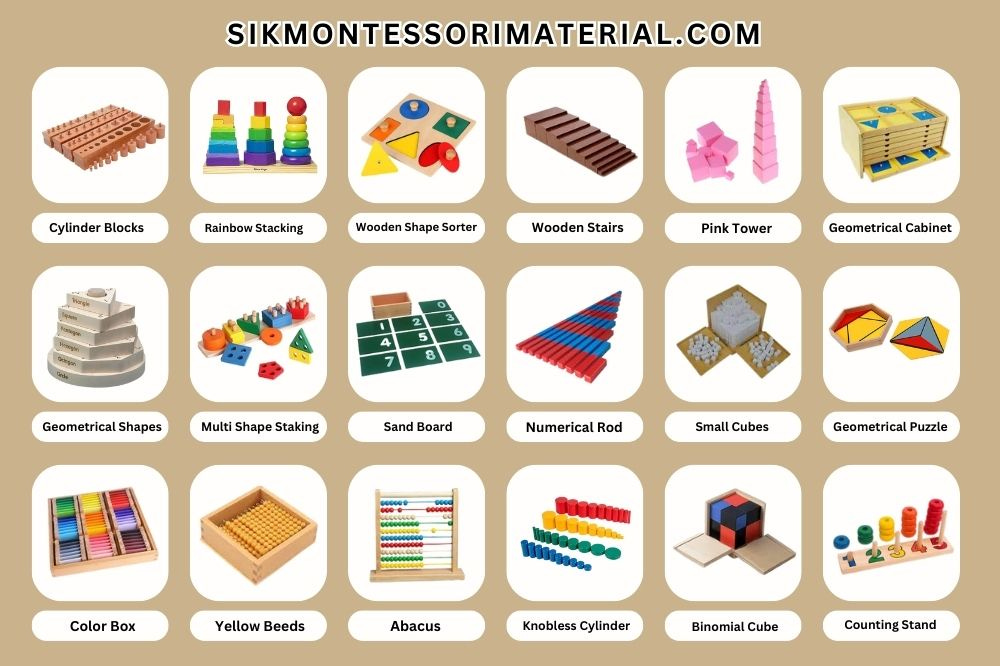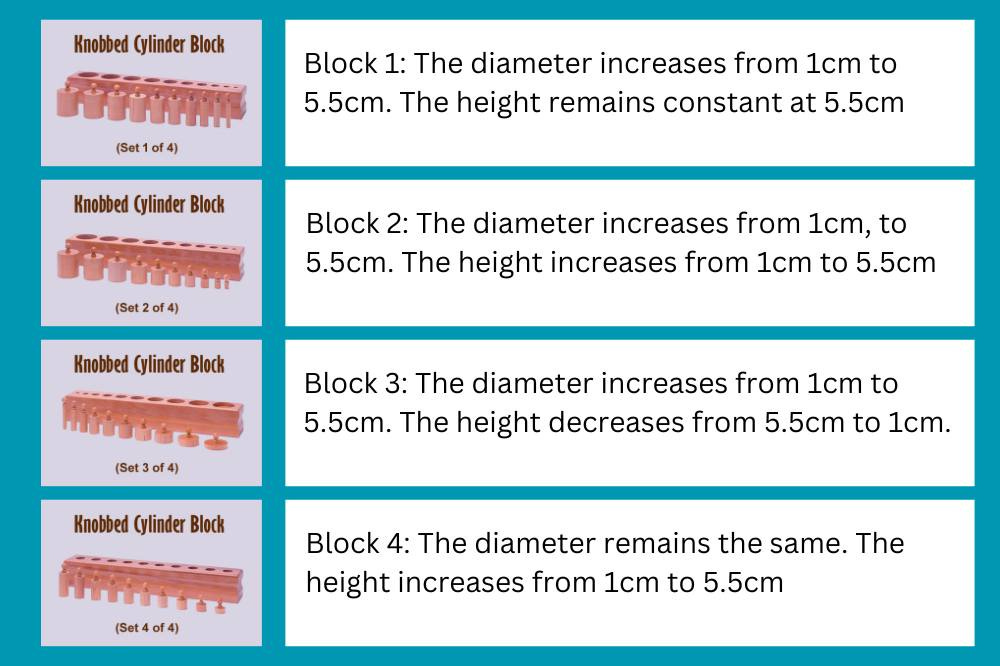My Goal
This series is working toward something specific: a practical guide for starting small, DIY Montessori schools in NYC. Not the fancy $45k/year programs, but simple Children's Houses that host 5-8 kids in converted apartments, church spaces, or community centers.
The blockers aren't what you'd think. They're not regulatory or pedagogical1 - they're practical. We need:
A "Recipebook" for an initial Children's House setup.
DIY Montessori Guide Self-Training
Open Source Alternatives to expensive sensory materials
Partnership strategy to get an initial experiment running.
I'm starting with Dr. Montessori's Own Handbook (1914) because I feel we are dramatically overcomplicating small, new Montessori schools. We focus too much on specific materials and curricula, when so many kids would benefit from Montessori's most profound insight: children are engaged in the critical work of psychological self-construction, and our job is to put them in charge of environments where they can develop their good spirit, in addition to meaningful intellectual work.
"The child's mind is not prepared for number 'by certain preliminary ideas,' given in haste by the teacher, but has been prepared for it by a process of formation, by a slow building up of itself."
— Dr. Montessori’s Own Handbook
This method should be as scientifically verifiable by parents as teaching mathematics (which is not scientific enough, but we're at least moving forward)2. The core principles of this spiritual development are simpler than most realize.
Much "Montessori-inspired" culture today focuses on having natural wooden toys, pastel and beige colors, and perfect shelf arrangements. But Montessori wanted more than that: she wanted to create spaces where children could become masters of their environment through their own careful experimentation and meaningful work.
"As is well known, we leave the children free in their work, and in all actions which are not of a disturbing kind. That is, we eliminate disorder, which is 'bad,' but allow to that which is orderly and 'good' the most complete liberty of manifestation."
— Dr. Montessori’s Own Handbook
The Core Insight
Think about how we approach physical development in children. We don't directly "teach" a baby to walk via curriculum - we create physical spaces for exploration, provide nutritious food for physical development, and create the social and spiritual conditions in which the child develops a love of walking (through encouragement, love, and play). Montessori argued we should approach psychological development the same way.
"As the child's body must draw nourishment and oxygen from its external environment, in order to accomplish a great physiological work, the work of growth, so also the spirit must take from its environment the nourishment which it needs to develop according to its own 'laws of growth.'"
— Dr. Montessori’s Own Handbook
The Children's House isn't a school - it's a real house where children are the masters. They prepare their own food, care for their environment, learn to move gracefully, and develop their senses through careful observation and experimentation. The Liberal Arts we often focus on (reading, writing, arithmetic) emerge naturally from this foundation of sensory development and practical independence3 and, yes, well-crafted materials which embed knowledge into the sensory experience (eg. counting beads embed arithmetic knowledge, and sandpaper cards embed writing knowledge).
Self-Correcting Educational Materials
How is it possible for children to learn complex skills through independent observation and experimentation, without lecture? This is what's so brilliant about Montessori's early materials: they're completely self-correcting. The knowledge is embedded in the use of the material, no need for instruction.
Take the cylinder blocks - if you put a cylinder in a hole that's too big, you'll eventually be stuck with one that doesn't fit anywhere. The material itself tells you you've made a mistake, no adult required. Note that this is also true about some household objects, like measuring cups; there is only one way to stack them, and if you get it wrong, you'll be stuck with one that doesn't stack correctly.
She also isolates just one variable at a time. In the cylinder blocks, only the diameter changes while height stays constant. In another set, only height changes while diameter stays constant. In a third, both change together.
Why so specific? Because our senses aren't born fully formed - they need to be trained one dimension at a time. The children find this fascinating. They'll sit there solving the same cylinder blocks over and over, sometimes forty times in a row, testing and refining their perception of size or weight or sound. No gold stars needed, no adult approval required. Just pure, focused concentration as they build sensory power.
"The didactic material, in fact, does not offer to the child the 'content' of the mind, but the order for that 'content.' It causes him to distinguish identities from differences, extreme differences from fine gradations, and to classify, under conceptions of quality and of quantity, the most varying sensations appertaining to surfaces, colors, dimensions, forms and sounds."
— Dr. Montessori’s Own Handbook

Modern Implications
This got me thinking - if Montessori were designing spaces today (she died in 1952), what would she include? What modern tools support independence and self-formation while maintaining her core principles?
The key, I think, is to look for powerful tool-exercises4 that:
Enable direct manipulation and experimentation (rather than hiding mechanisms where kids can't see)
Have self-correcting feedback (what she called "control of error")
Focus on one sense at a time5
Some promising directions (working notes):
Digital microscopes
Light tables for color exploration and pattern making
Recording tools for language & media development
"Ideally designed" digital instruments, which allow one to build up symphonic structures as constructively as legos
Simple Robot Programming (see Cubetto and Mindstorms)
Assembly of Computers (think Framework laptop, but that's the final level in a sequence)
Simple electronics and logic gates, with lightbulbs and nice, easy to manipulate wires (maybe magnetic wires, or better & more simply designed snap circuits). The goal should be to "complete the circuit" and students should be able to see how it works simply.
But I have to catch myself - it's easy to get carried away with cool technology. The genius of Montessori's original materials is their profound simplicity. Each isolated one concept, enabled direct manipulation of the concept itself, and had clear feedback mechanisms built in that allowed for deep concentration in kids as young as 2.5 or 3. Building to this standard is important, and clearly possible, but also perhaps a distraction compared to lowering the cost of a Minimally Viable Montessori house.
Next Steps
Anyway, I'm out of time (and if I stretch this out, I'll never publish). This is part one of an exploration into creating accessible, modern Children's Houses in NYC. Future pieces will hopefully consider:
budget and bill of materials for a functional Children's House
decor, painting, and furnishing guide for a Children's House
Space requirements and adaptations for NYC spaces
Self-training (e.g. DIY guide training)
Community building and parent recruitment
Partnerships & launching
I'd love to hear from others exploring this space. What modern tools have you seen support genuine development in the 3-7 age group? Drop me a note in the comments.
---
The real test of any educational method isn't its philosophical elegance but its practical results (as evidenced by the physical, spiritual, and intellectual flourishing of the child).
I highly recommend you read Dr. Montessori's Own Handbook if that interests you, at all.
Subscribe for more updates.
Though, those exist.
I do not mean social sciences or 'education science'. This stuff doesn't replicate. I mean the good old fashioned science of using our own god-damned eyeballs to tell that a child is happy, thriving, responsible, curious... this is obvious to any parent with half a brain, and I'm not going waste time justifying it (though you are of course welcome to).
And why shouldn’t the “liberating arts” be developed by creating an environment which liberates the spirit of the child, and encourages experimentation, exercise, responsibility, and work. That sounds exactly like what I’d expect of the liberal arts.
I use the word tool-exercise because a hammer is a powerful tool, but only if you know how to use it to nail a board. A tool-exercise is where these two meet. You're introducing the child to a powerful tool, and also to a powerful way of using that tool, which may introduce the child to a powerful new way of seeing the world, and in turn, seeing themselves as masters of that world.
In more scientific terms, you want exercises to be "proofs" that a specific variable of reality (maybe height, density, quantity, color, pitch) works the way it does -- to help the child develop a "sense" for that variation in reality







You can't imagine how excited I am by such a thing Andrew. Observing daily how both my kids are learning/ progressing is putting me in a constant flow of 'awe' [they're both enrolled in a local montessori school since 2 y/o].